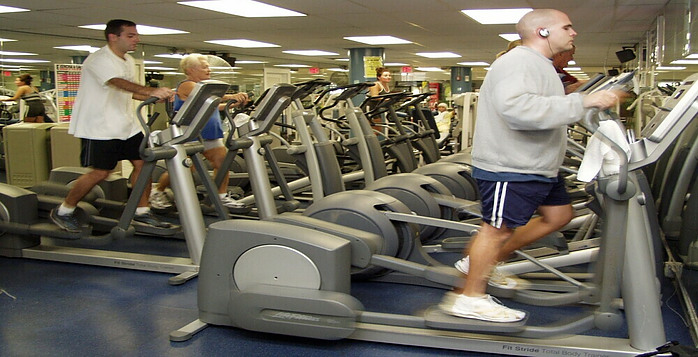The Importance Of Cardiovascular Exercise
 Introduction
Introduction
In our fast-paced modern world, where sedentary lifestyles and desk-bound jobs have become the norm, the importance of cardiovascular exercise cannot be overstated. Cardiovascular exercise, often referred to as cardio or aerobic exercise, is a cornerstone of a healthy lifestyle. In this blog post, we will delve into the significance of cardiovascular exercise, its numerous benefits, and provide practical tips to help you get started on your journey towards better heart health and overall well-being.
Understanding Cardiovascular Exercise and Its Significance
1. Defining Cardiovascular Exercise and Common Examples
Cardiovascular exercise involves activities that increase your heart rate and breathing while engaging the large muscle groups in your body. Common examples include jogging, cycling, swimming, brisk walking, dancing, and even activities like jumping rope or stair climbing. The key is to sustain the activity for an extended period, typically at least 20-30 minutes, to reap the full benefits.
2. The Science Behind Cardio: How it Benefits the Heart and Lungs
Cardiovascular exercise has a profound impact on your heart and lungs. It strengthens your heart muscle, making it more efficient at pumping blood and delivering oxygen to your body’s tissues. Simultaneously, it enhances lung capacity, allowing for better oxygen exchange. This combination leads to improved overall cardiovascular health.
3. Dispelling Myths Around Cardiovascular Training
There are common misconceptions about cardiovascular exercise, such as the belief that it’s only for weight loss or that you need to perform high-intensity workouts daily. In reality, cardio benefits go beyond weight management, and the frequency and intensity should be tailored to individual fitness levels and goals.
4. Statistics on Heart Health and the Impact of Cardio Workouts
The statistics on heart health are alarming. Cardiovascular diseases are a leading cause of death worldwide, but regular cardio workouts can reduce your risk significantly. A study published in the American Journal of Cardiology found that those who engaged in regular aerobic exercise had a 49% lower risk of heart disease.
The Multifaceted Benefits of Regular Cardio Workouts
5. Weight Management and the Role of Cardio Exercise
While weight loss is one of the many benefits of cardiovascular exercise, it’s essential to recognize that maintaining a healthy weight is crucial for heart health. Cardio workouts burn calories, helping you shed excess pounds and maintain a healthy body composition.
6. Cardiovascular Health Improvements and Disease Prevention
Cardio exercise has been linked to reduced blood pressure, improved cholesterol levels, and a lower risk of developing conditions like diabetes and stroke. Regular cardio workouts help keep your blood vessels healthy, reducing the likelihood of plaque buildup and blood clots.
7. Mental Health Benefits: Reducing Stress and Improving Mood
Cardiovascular exercise isn’t just about physical health; it also has a positive impact on mental well-being. It releases endorphins, which can alleviate stress, reduce symptoms of depression and anxiety, and boost your overall mood.
8. Longevity and Quality of Life Enhancements Through Regular Exercise
Studies consistently show that people who engage in regular cardiovascular exercise tend to live longer and enjoy a higher quality of life. It’s not just about adding years to your life but also adding life to your years.
Personal Stories and Expert Insights on the Impact of Cardio Exercise
To further emphasize the significance of cardiovascular exercise, we’ve gathered personal stories from individuals who have experienced life-changing improvements in their health and fitness through regular cardio workouts. Additionally, we’ve sought insights from fitness experts and healthcare professionals to underscore the importance of incorporating cardio into your daily routine.
Getting Started with Cardio: Practical Guidelines and Tips
9. Tailoring a Cardiovascular Exercise Plan to Individual Needs
No one-size-fits-all approach works when it comes to cardio. It’s essential to create a workout plan that aligns with your fitness level, goals, and personal preferences.
10. Low-Impact vs. High-Impact Exercises: Choosing the Right Intensity
For those with joint issues or other physical limitations, low-impact cardio exercises like swimming or stationary cycling can be just as effective as high-impact activities while minimizing the risk of injury.
11. Incorporating Diversity in Cardio Routines: Examples for All Fitness Levels
Variety is key to maintaining motivation and preventing boredom. We provide examples of different cardio exercises suitable for beginners, intermediates, and advanced individuals, allowing you to mix things up and keep your workouts interesting.
12. Tips for Staying Motivated and Tracking Progress
Staying motivated is often the biggest challenge in maintaining a regular exercise routine. We share tips on setting achievable goals, finding a workout buddy, and tracking your progress to stay on course.
13. Advice from Health Professionals on Beginning a Safe Cardio Regimen
Finally, we offer advice from healthcare professionals on how to start a cardio regimen safely. Prioritizing your health and safety is paramount, and their guidance can help ensure that you embark on your cardio journey with confidence.
Conclusion
In conclusion, cardiovascular exercise is not merely a fitness trend; it is a critical component of a healthy lifestyle that can significantly impact your heart health, overall well-being, and longevity. By understanding the science behind it, dispelling myths, and recognizing the multifaceted benefits, you can make informed choices about incorporating cardio workouts into your daily routine. Remember, it’s never too late to start, and the rewards for your heart and body are well worth the effort.